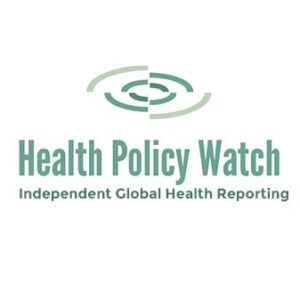Report: Global nurse shortage widens inequities, fuels migration risks
Editor's Note
Wealthy nations continue to draw nurses from poorer countries, worsening fragile healthcare systems and deepening global inequities, according to the newly released State of the World’s Nursing 2025 report from the World Health Organization (WHO) and International Council of Nurses (ICN).
As detailed in a May 12 article from Health Policy Watch, the report finds the global nursing workforce grew by roughly 2 million between 2018 and 2023. Nonetheless, the world still faces a shortfall of 5.8 million nurses, which is down only slightly from 6.2 million in 2018. The shortage is most severe in low- and middle-income countries (LMICs), which struggle with nurse education, employment, and retention. In contrast, nearly half of the world’s 29.8 million nurses work in high-income countries (HICs), which represent just 17% of the global population.
Migration patterns compound the inequity. According to the article, 23% of nurses in HICs are foreign-born, compared to only 1% to 8% in lower-income regions. The ICN warns that this dynamic drains already fragile health systems and reflects “a vicious cycle” of poor compensation, unsafe working conditions, and inadequate employment pathways in source countries.
Although low-income countries are graduating nurses at a faster pace than HICs, the report notes that these gains are offset by rapid population growth and scarce employment opportunities, Health Policy Watch reports. WHO and ICN stress the need for bilateral recruitment agreements that ensure mutual benefit and adherence to the WHO Global Code of Practice on the International Recruitment of Health Personnel. High-income countries, meanwhile, face a different crisis: a wave of nurse retirements that threatens to outpace new entrants, potentially leaving fewer experienced professionals available to mentor early-career nurses.
As detailed in the article, wages and working conditions vary dramatically across countries. In 2023, the global median entry-level nursing wage was $774/month across 82 countries, with the report showing HICs paying roughly three times more than LICs. Only 55% of countries had labor regulations addressing hours and working conditions, and just 42% had mental health support in place, despite widespread burnout and trauma linked to COVID-19.
The report also highlights a rise in violence against health workers. Health Policy Watch notes that between January 2018 and March 2025, over 8,300 incidents were reported from 22 countries, leading to more than 3,000 deaths and 6,000 injuries. While 59% of countries now report having protective measures in place—up from 37% in 2020—the Americas lag behind, with only 36% of countries reporting such protections.
ICN leaders quoted in the article acknowledged progress in certain areas, such as advanced practice roles and gender diversity. However, they emphasized that gains are undercut by other factors, calling the report a roadmap for urgent reform.
Read More >>

 Free Daily News
Free Daily News